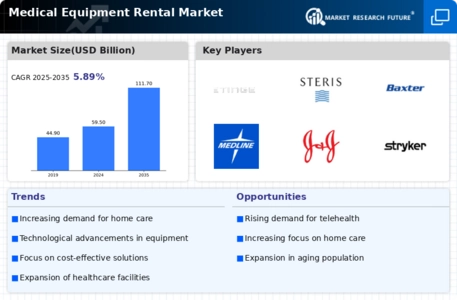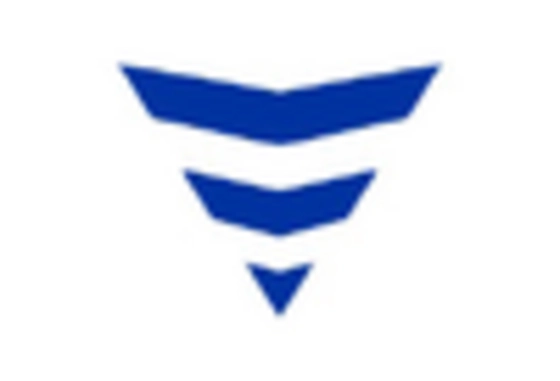Increased Focus on Home Healthcare Services
The shift towards home healthcare services is a notable driver of the Medical Equipment Rental Market. As patients increasingly prefer receiving care in the comfort of their homes, the demand for rental medical equipment has surged. This trend is supported by the growing recognition of the benefits of home-based care, including improved patient satisfaction and reduced hospital readmissions. Market data suggests that the home healthcare market is projected to reach 300 billion by 2025, indicating a robust opportunity for the Medical Equipment Rental Market to cater to this evolving landscape.
Regulatory Support and Reimbursement Policies
Regulatory support and favorable reimbursement policies are essential drivers of the Medical Equipment Rental Market. Governments and health organizations are increasingly recognizing the importance of rental services in enhancing healthcare access. Policies that promote the use of rental equipment can lead to improved patient care and cost savings for healthcare systems. For instance, reimbursement frameworks that include rental services encourage healthcare providers to utilize these options. This regulatory environment suggests that the Medical Equipment Rental Market will likely benefit from continued support, fostering growth and innovation in the sector.
Technological Advancements in Medical Equipment
Technological advancements play a pivotal role in shaping the Medical Equipment Rental Market. Innovations in medical devices, such as telehealth technologies and advanced diagnostic tools, are becoming increasingly available for rental. This trend allows healthcare providers to access the latest equipment without the burden of ownership costs. The integration of smart technologies into medical devices enhances patient monitoring and care, which is particularly appealing in rental agreements. As technology continues to evolve, the Medical Equipment Rental Market is expected to grow, driven by the demand for cutting-edge solutions that improve patient outcomes.
Aging Population and Increased Healthcare Demand
The aging population is a critical driver of the Medical Equipment Rental Market. As individuals age, they often require more medical care and equipment, leading to a heightened demand for rental services. According to recent statistics, the population aged 65 and older is projected to reach 1.5 billion by 2050, which suggests a substantial increase in healthcare needs. This demographic shift compels healthcare providers to seek cost-effective solutions, such as renting medical equipment, rather than purchasing it outright. Consequently, the Medical Equipment Rental Market is likely to experience growth as healthcare facilities adapt to the increasing demand for accessible and affordable medical solutions.
Rising Healthcare Costs and Financial Constraints
Rising healthcare costs are a significant factor influencing the Medical Equipment Rental Market. With healthcare expenditures continuing to escalate, many healthcare providers and patients are seeking more economical alternatives. Renting medical equipment allows for budget optimization, as it eliminates the need for large capital investments. Data indicates that healthcare spending is expected to reach 10 trillion by 2025, which may drive more entities to consider rental options. This trend suggests that the Medical Equipment Rental Market will likely expand as stakeholders prioritize financial sustainability while still ensuring access to necessary medical devices.

















Leave a Comment